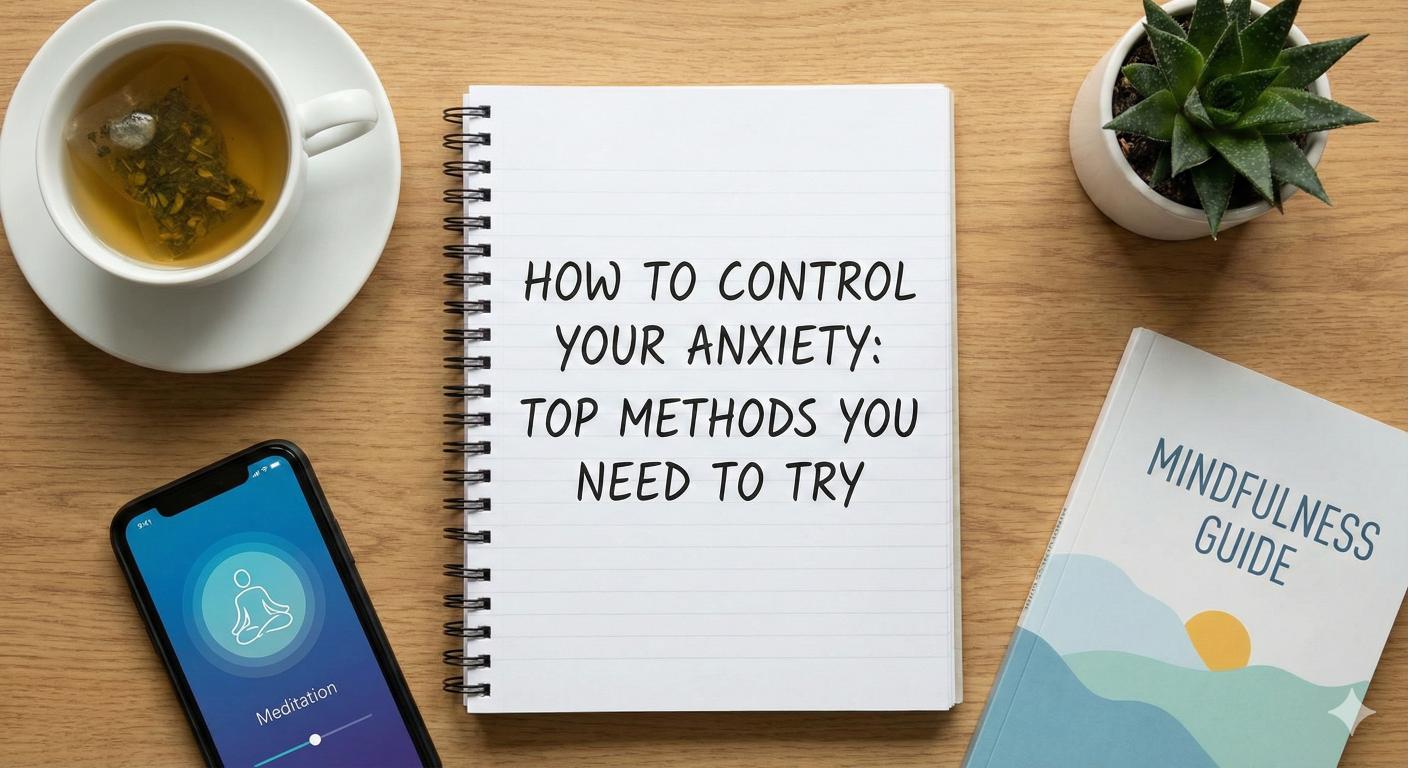What Causes Depression and Anxiety?
Uncover what causes depression and anxiety, exploring factors and treatments for better mental health.

Understanding Depression and Anxiety

Overview of Mental Health Conditions
Anxiety and depression are the most prevalent psychiatric disorders across the globe. They are highly comorbid, meaning individuals often experience both conditions simultaneously, significantly affecting their quality of life and contributing to years lived with disability [1].
The following table illustrates a comparison of the prevalence of anxiety and depression worldwide:
DisorderPrevalence Rate (%)Anxiety7.3Depression4.4Both Conditions2.8
Understanding these conditions is vital for recognizing their impact on mental well-being. It is essential for individuals and families to be informed about these common issues in mental health.
Relationship Between Depression and Anxiety
The connection between depression and anxiety is significant, indicating a critical relationship between these two mental health conditions. Research shows that cognitive biases, stressful life events, and shared genetic influences are common risk factors [2].
Heritability estimates reveal a strong genetic component to both disorders, suggesting that individuals with a family history of these conditions may be at greater risk. Additionally, stressors in life may exacerbate symptoms of either condition, creating a cycle that is difficult to break.
For further understanding on managing these challenges, individuals can explore resources on how to deal with depression and anxiety and investigate whether depression and anxiety are considered a disability. The interplay between these mental health issues is complex, underlying the need for comprehensive approaches to treatment and support.
By recognizing the connections and influences of these conditions, it becomes easier for individuals to seek appropriate help and understanding for what causes depression and anxiety.

Factors Contributing to Depression
Understanding the factors that contribute to depression is essential for identifying what causes depression and anxiety. Several intertwined influences shape an individual's risk for experiencing these mental health disorders.
Genetic Influences
Genetics play a significant role in the development of Major Depressive Disorder (MDD). Family, twin, and adoption studies have shown that the influence of genetic factors on MDD is approximately 30-40% source. This implies that individuals with a family history of depression may be more susceptible to experiencing it themselves.
Additionally, some research estimates that 37-48% of vulnerability for depression stems from genetic predisposition, suggesting that while genetics are important, they only account for a part of the picture. Environmental factors can impact how these genetic tendencies manifest in an individual’s life source.
Genetic ContributionPercentage InfluenceGenetic Factors30-48%Environmental FactorsMore than 50%
Environmental Factors
Environmental influences account for more than half of the factors leading to depression. Non-genetic risk factors can include adverse childhood events, such as trauma, neglect, and stress. Studies have indicated that severe childhood experiences can significantly increase the risk of developing depression later in life. For instance, the risk factors associated with environmental influences include:
Impact of Childhood Trauma
Childhood trauma is a substantial contributor to the onset of depression. A significant study reported that 75.6% of chronically depressed patients had clinically significant histories of childhood trauma. Of these, 37% experienced multiple episodes of trauma during childhood, which correlated with more severe depressive symptoms in adulthood. The types of childhood trauma most commonly associated with heightened severity of symptoms included emotional and sexual abuse source.
Overall, the multiplicity of traumatic experiences stands out as a strong predictor for the severity of depressive symptoms in adults suffering from chronic depression. Understanding these connections provides valuable insight into addressing mental health and highlights the need for support systems aimed at mitigating such impacts.
For individuals seeking guidance on managing their mental health, tailored advice can be found in articles like how to deal with depression and anxiety. Understanding the interplay between genetics, environment, and trauma can foster a more comprehensive approach to addressing these complex conditions.

Biological Factors in Depression
Understanding the biological factors contributing to depression is crucial for gaining insight into its underlying causes. These factors include neuronal communication in the brain, altered HPA axis functioning, and the role of neurotransmitters.
Neuronal Communication in the Brain
Neurons communicate through chemical signals called neurotransmitters. This communication is essential for regulating mood and emotional responses. Neurotransmitters play a significant role in how nerve cells interact, influencing the overall biology of depression. Antidepressant medications typically work by increasing the concentration of neurotransmitters in the synaptic gap, allowing the brain to manage mood more effectively [3].
NeurotransmitterRole in DepressionSerotoninRegulates mood, sleep, and appetiteNorepinephrineInfluences alertness and arousalDopamineAffects motivation and pleasure
Maintaining proper levels of these neurotransmitters is pivotal in treating depression and anxiety, as imbalances can lead to mood disorders.
Altered HPA Axis Functioning
The hypothalamic-pituitary-adrenal (HPA) axis is a crucial part of the body’s stress response system. In individuals with depression, particularly those with anxious depression, the HPA axis often demonstrates abnormal functioning. Studies indicate that these patients have attenuated adrenocorticotropic hormone (ACTH) and cortisol responses, impaired cortisol suppression, and elevated levels of both ACTH and cortisol [4].
HPA Axis FunctioningObserved Changes in DepressionACTH ResponseAttenuated in patients with anxious depressionCortisol LevelsElevated and poorly regulatedCortisol SuppressionImpaired
These changes in the HPA axis can contribute to the development and maintenance of depressive symptoms.
Role of Neurotransmitters
Neurotransmitters are vital in the brain's functioning, particularly in regulating mood and emotional well-being. Notable neurotransmitters involved in depression include serotonin, norepinephrine, and dopamine. Each serves a distinct purpose, and their balance is essential to mental health. An imbalance can lead to symptoms of depression or anxiety.
The inflammatory response system, activated by pro-inflammatory cytokines, can also mimic depression symptoms. About 30% of individuals treated with recombinant interferons experience depression as a side effect. This suggests that pro-inflammatory cytokines may play a role in depression, particularly among those with comorbid physical conditions.
By understanding these biological factors—neuronal communication, altered HPA axis functioning, and neurotransmitter roles—individuals can gain better insight into what causes depression and anxiety and consider appropriate treatments or coping strategies. For support managing these conditions, they should explore how to deal with depression and anxiety and seek professional help when necessary.
Connection Between Chronic Illness and Depression
The interaction between chronic illness and depression is significant and multifaceted. Understanding this connection is crucial for addressing both physical health and mental well-being.
Influence of Chronic Diseases
People with chronic diseases are at a higher risk of developing depression. This relationship can be triggered by various factors, including the psychological burden of managing a long-term condition. Research indicates that individuals suffering from chronic illnesses and depression often display more severe symptoms of both conditions [6].
For example, chronic diseases such as heart disease, diabetes, and stroke can lead to a cycle of poor health outcomes where depression worsens the disease's prognosis.
Severity of Symptoms
The presence of both chronic conditions and depression raises the severity of symptoms experienced by individuals. This dual burden can manifest in increased physical pain, reduced functional capability, and heightened emotional distress.
A combination of chronic health issues and depression affects individuals more severely than either condition alone. Such severity can lead to higher rates of healthcare utilization, as individuals may require more frequent medical interventions and mental health support.
ConditionDepression SeverityChronic Disease AModerate to SevereChronic Disease BSevereChronic Disease CMild to Moderate
Individuals suffering from chronic conditions illustrating a co-occurring depressive state may need tailored treatment plans that address both their physical and mental health needs.
Association with Specific Health Conditions
Specific chronic health conditions are commonly associated with depression. Studies suggest that individuals with depression are at a greater risk for developing certain chronic illnesses. These include:
This connection may arise from a blend of biological, behavioral, and social factors National Institute of Mental Health (NIMH). For example, inflammatory responses, influenced by chronic conditions, can mimic symptoms of depression, further complicating the association between these ailments.
Understanding the overlap between chronic illness and depression is essential. Those facing these challenges can significantly benefit from integrated care approaches that combine both mental health and chronic illness management. For additional guidance on managing these complex interactions, consider exploring resources on how to deal with depression and anxiety.
Treatment Approaches for Depression
When exploring what causes depression and anxiety, it is equally important to consider the available treatment options. Several effective strategies exist, including psychotherapy, medication, and collaborative care models.
Psychotherapy
Psychotherapy, also known as talk therapy, is an essential treatment method for addressing depression. One popular approach is Cognitive-Behavioral Therapy (CBT), which focuses on changing negative thought patterns to help individuals manage stress and depression effectively. CBT encourages setting small, achievable goals and regularly evaluating progress [7].
The benefits of psychotherapy include:
Benefits of PsychotherapyDescriptionImproved coping skillsHelps individuals develop strategies to handle stress.Enhanced self-awarenessPromotes understanding of thoughts and feelings.Emotional supportProvides a safe space to express feelings and concerns.
Medication
Medication can often be an effective component of treatment, particularly in severe cases of depression. Antidepressants may be prescribed to help balance neurotransmitters in the brain, helping to alleviate symptoms. It is essential for individuals to consult with their healthcare provider to determine the most appropriate medication and dosage for their needs.
The most commonly prescribed classes of antidepressants include:
Type of AntidepressantDescriptionSSRIs (Selective Serotonin Reuptake Inhibitors)Increase serotonin levels in the brain, often used as a first-line treatment.SNRIs (Serotonin-Norepinephrine Reuptake Inhibitors)Target both serotonin and norepinephrine to help alleviate depression.Tricyclic AntidepressantsAn older class of medications, now used less frequently due to side effects.
Collaborative Care Models
Collaborative care models involve a multidisciplinary approach, integrating various health professionals to support individuals with depression. This may include primary care providers, care managers, and psychiatric consultants working together to coordinate treatment. Such models can improve health outcomes for those with both depression and chronic diseases [6].
Benefits of collaborative care models include:
Benefits of Collaborative CareDescriptionComprehensive treatmentAddresses both mental and physical health needs.Increased access to resourcesProvides individuals with multiple support options.Better communicationFacilitates sharing of information among care providers.
By exploring these treatment approaches, individuals struggling with depression can find effective ways to manage their symptoms and improve their overall quality of life. Engaging in therapy, considering medication, or participating in a collaborative care model can provide the necessary support to navigate the complexities of depression. For information on managing these challenges, readers can refer to our article on how to deal with depression and anxiety.
Addressing Depression and Stress
Understanding and managing the connection between stress and depression is crucial for individuals facing these mental health challenges. Below are key aspects to consider.
Identifying Stress-Depression Cycle
Chronic or long-term stress is a significant contributing factor to depression. Stress can affect various aspects of life, including appetite, sleep habits, and concentration abilities [7]. This interplay creates a cycle where stress leads to depressive symptoms, which can, in turn, heighten stress levels.
StressorsImpact on Mental HealthWork-related pressuresIncreased anxiety and depressive symptomsRelationship issuesImpact on mood and self-esteemFinancial difficultiesHeightened feelings of hopelessness
Recognizing this cycle is the first step toward effective management.
Coping Mechanisms
Developing effective coping strategies is essential for individuals looking to break the stress-depression cycle. Research indicates that lifestyle changes and fostering a positive mindset can significantly help in managing both conditions. Some active coping strategies include:
Jason, a participant in a wellness program, mentioned, "Connecting with friends and engaging in physical activities helped me manage my stress and improve my mood."
Seeking Professional Help
For some, managing stress and depression may require professional intervention. Cognitive-behavioral therapy (CBT) is a widely recommended method for addressing these issues. CBT focuses on changing perspectives and behaviors, which can help individuals regain control over their emotional well-being.
Professional support can include:
Seeking help is a key step in managing both stress and depressive symptoms. For more detailed strategies, read our article on how to deal with depression and anxiety.
By understanding the stress-depression cycle, employing coping mechanisms, and seeking appropriate help, individuals can effectively address their mental health challenges.
References
[2]:
[3]:
[4]:
[5]:
[6]:
[7]:
More Resources
A team ready to start your journey.
Get in touch — today.
We are a safe space – a haven for exceptional individuals to receive discreet, personalized, in-person treatment and care.
.avif)










